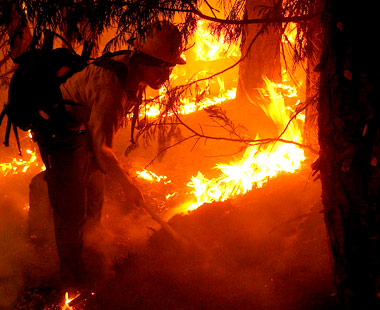
Our possible future. (Photo by H Dragon.)
Just so you know, humanity’s grand, global scientific experiment called “global warming” is still running. And it continues to return some frequently counterintuitive results.
Melting Arctic ice may result in colder winters than normal, Ars Technica reports.
As a result of this, Greene told Ars two things happen to the jet stream: it gets substantially weaker, and it tends to meander widely from north to south as it traverses the globe. This can lead to the severe chills the US and Europe have experienced over the past several winters, but the meandering jet stream can also draw warmer southern air north, as happened in the US this spring.
Last year, when we covered Europe’s deep freeze, Mark Serreze of the National Snow and Ice Data Center suggested that the negative phase of the Arctic Oscillation may be the product of the loss of Arctic sea ice, though he described the idea as “very much in its infancy.”
Global warming will likely cause more fires outside of the tropics, but possibly fewer within.
In the near term, the most consistent increases in fire activity occur in biomes with already somewhat warm climates; decreases are less pronounced and concentrated primarily in a few tropical and subtropical biomes. However, models do not agree on the direction of near-term changes across more than 50% of terrestrial lands, highlighting major uncertainties in the next few decades. By the end of the century, the magnitude and the agreement in direction of change are projected to increase substantially. Most far-term model agreement on increasing fire probabilities (62%) occurs at mid- to high-latitudes, while agreement on decreasing probabilities (20%) is mainly in the tropics.
Here’s the grim forecasting map that accompanies that study:

Notice that red area in the Western United States? Well, about that …
During the last two summers, wildfires have run rampant in the Southwest, setting record after record for size and destructiveness. It’s no coincidence that severe drought and much above normal temperatures have been occurring in these same areas — although land-management practices and a surplus of combustible material — bear some responsibility as well.
That last post has a handy list of the various horrible, apocalyptic conflagrations that hit the Southwest last year.
Climate change predictions: often unpredictable.



